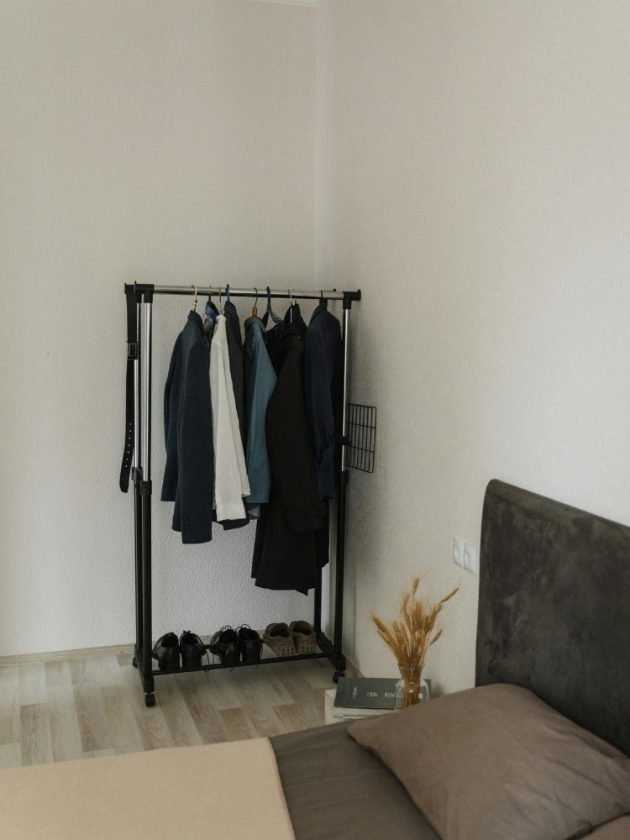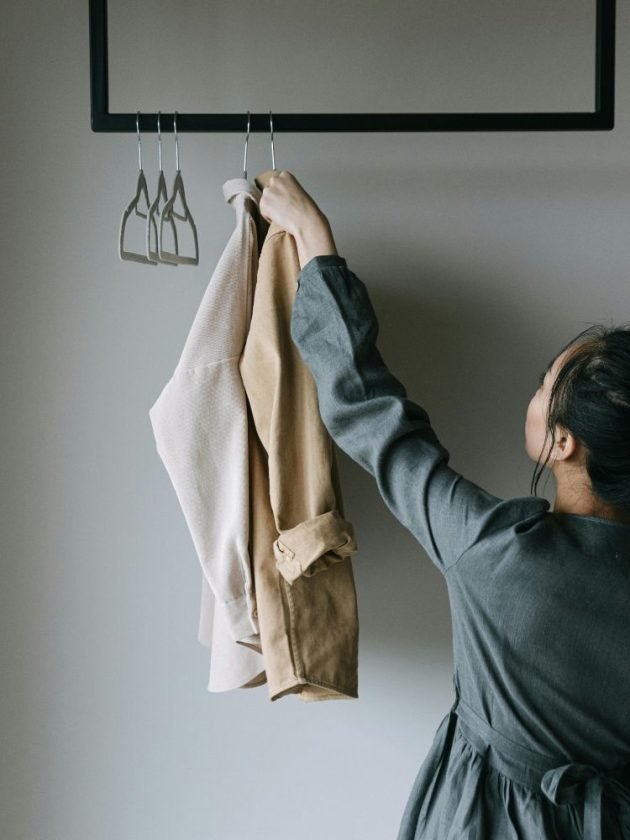In slow fashion, we often talk about “fewer, better”. All too often, though, we focus in on the fewer part and forget about the better.
Putting the “Better” in the Fewer, Better Philosophy
There’s no question that we need to produce and consume fewer things. But if we only think about the less part of the equation, slow fashion can feel like a sacrifice.
Yet when we focus on the better — cherishing the clothes we love, caring for them more intentionally, and setting high standards for what we allow into our closets — the fewer part comes more naturally. And the experience is so much more joyful.
When I stopped thinking about how I wasn’t “supposed to” buy more clothes and instead leaned into simply appreciating the beauty of the clothes already in my closet, I found myself wanting those new clothes less.
I created higher standards for what I allowed into my wardrobe. This not only led to fewer purchases but also made me happier with the clothes I did decide to purchase. And when you have such incredible garments already in your closet, fashion’s hype machine is a lot less tempting.
To be clear, this doesn’t mean I don’t love admiring good fashion or that I never buy anything! But I have become far more intentional with my purchases.
What Does “Better” Mean?
When you have garments you absolutely love — whether for their quality, materials, fit, or unique design — the relentless churn of newness loses its appeal.
But “better” doesn’t always mean more expensive. It means knowing what you love, and having a more discerning eye.
For me, I always look at materials first. Sure sometimes this can be a little more of an investment, but not always. There are designer brands that use 100% polyester for some garments, and plenty of mid-priced brands that are committed to using natural fibers. That natural mid-price garment is a way better investment in my opinion.
I prioritize natural materials because that is what “better” means to me.
Recently, I added a 100% organic linen button-down to my closet, and it’s an absolute dream. It was one of the few new (non-secondhand) items I added to my wardrobe in 2024, and I’d wear it every single day if I could. And then when I put on a polyester shirt, I can feel the difference. (As in literally feel the difference — I sweat so much more!)
Suddenly, having one amazing 100% linen shirt instead of five cheaper polyester ones doesn’t feel like a sacrifice. It feels like a gift.
The same goes for the secondhand cashmere sweater I swapped into my closet years ago.
I used to dread winter. Then, I found this sweater and I realized that I could actually make it through -10-degree days when wearing the right materials.
A single sweater changed how I viewed an entire season! This is the under-appreciated power and potential of clothing.

For you, “better” might not be about fabrics, but about the fit or the style or even the color and pattern. If you’re not sure what you would define “better” clothing as, start paying more attention to the clothes you enjoy wearing. What’s the silhouette? The color? The fabric?
There are often patterns among your go-to garments.
Cultivating Gratitude in Our Wardrobes
One of the most transformative practices I’ve incorporated into my slow fashion journey is gratitude.
In a world that constantly tells us we need this must-have trend, go to that unique next destination, or use this skincare product to look 10 years younger, it’s not easy to pause and acknowledge when we have enough.
But knowing our “enough point” doesn’t mean we stop evolving or refining our wardrobes — it means we approach fashion with a mindset of contentment rather than scarcity.
Here are some ways to cultivate gratitude in our wardrobes:
1) Honor Our “Hero Pieces”
Do you have pieces in your closet that you wear again and again — pieces that make you feel good, confident, comfortable, or put together? These are often called “hero pieces.”

Think about what those pieces are for you and how they’ve served you:
- Maybe you have a trusty blouse that gave you confidence in an important job interview.
- Maybe a particular handbag makes you feel put-together even on the days you were rushing out the door.
- Maybe a certain pair of sweatpants is your go-to for a cozy, restful evening after a stressful week.
Perhaps it can sound silly at first to be grateful for clothing, but when we think about how clothes have supported us, it makes sense to appreciate these pieces.
Slow fashion isn’t about deprivation. It’s about developing a deeper sense of satisfaction and long-lasting joy from the clothes we already have.
2) Turn Overwhelm into Abundance
Recently, there was a trend on TikTok where people reframed complaints as expressions of gratitude. Instead of saying, “I have too many plans,” they’d say, “What a privilege it is to have a full life.”
Some (most?) of us probably have closets with more clothes than we regularly wear. Instead of saying, “I’m overwhelmed by my closet,” we can reframe it:
- “What a privilege it is to have a closet so full of clothes that I have options.”
- “What an opportunity to rediscover and restyle pieces I already own.”
- “What a chance to rehome items that no longer fit my life and bring joy to someone else.”
Instead of feeling guilt over a full closet, I try to see it as an opportunity — whether that’s restyling an old favorite or passing something along to a new loving home.
3) Acknowledge the Makers of Our Clothes
Behind every garment — whether it’s a handmade artisan piece or a mass-produced fast fashion item — are skilled hands of artisans, garment makers, sewists, and factory workers. Even industrial sewing machines are operated by real people.
When we pause to recognize this skilled labor, we not only develop a renewed sense of appreciation for our pieces, but we also acknowledge the (often undervalued and underpaid) workers who brought them to life.
Big fashion brands often hide these makers and the exploitative conditions they face. But recognizing the human effort behind each garment can help us shift our relationship with fashion. It can empower us to advocate for ethical labor conditions and fair wages in the industry.
Final Reflections: Gratitude as a Path to Slow Fashion
Practicing gratitude in our wardrobes is about more than just feeling good (though that is a good perk!) — it’s about reshaping how we engage with fashion.
When we approach our closets with gratitude, we shift from a mindset of scarcity and overwhelm to one of abundance and enoughness.
This practice helps us honor the value in what we already have, recognize the immense work that goes into every garment, and become more resilient against a culture that constantly urges us to consume more, no matter how much we already have.
Gratitude doesn’t mean we stop striving for better or stop curating our wardrobes. It means we approach these decisions with more care, joy, and appreciation.
And that is what truly puts the “better” in the “fewer, better” philosophy of slow fashion.
Want to get more slow fashion tips and inspiration?
window.fd(‘form’, {
formId: ‘66996624e60069b542a1f43b’,
containerEl: ‘#fd-form-66996624e60069b542a1f43b’
});
The post Fewer, Better: How to Cultivate Gratitude in Slow Fashion appeared first on .














